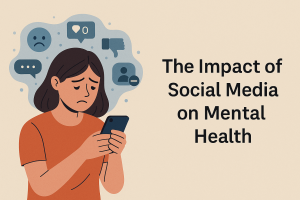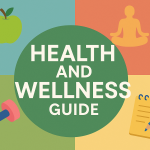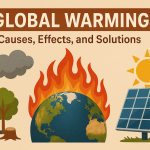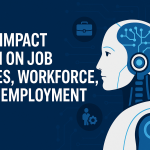The Impact of Social Media on Mental Health: A Double-Edged
Understanding the Role of Social Media in Daily Life
Social media has become an integral part of our lives. According to DataReportal’s 2024 Global Overview Report, over 5 billion people are using the internet, and 4.9 billion are active on social media platforms. This means nearly 60% of the global population is exposed to its effects daily (DataReportal, 2024).

From staying connected with friends and family to building careers and discovering news, social media has transformed communication. However, this digital dependency has led researchers and mental health experts to investigate its psychological toll.
The Positive Side: Benefits of Social Media on Mental Health
1. Community and Connection
Social media allows people to maintain relationships across distances. Especially during crises like the COVID-19 pandemic, platforms like Zoom, WhatsApp, and Instagram helped reduce feelings of isolation. Support groups for anxiety, depression, or chronic illnesses thrive online, offering users a sense of community.
2. Mental Health Awareness
Mental health influencers, therapists, and advocacy groups use platforms like Instagram and TikTok to raise awareness, break stigmas, and provide support. Campaigns like #MentalHealthAwareness and #ItsOkayToNotBeOkay have helped normalize seeking help.
3. Opportunities for Self-Expression
Creative platforms such as YouTube or Pinterest empower users to express themselves through videos, blogs, and art. This self-expression can act as an emotional outlet and foster self-confidence.
4. Access to Information and Resources
Educational content about coping mechanisms, therapy options, or mindfulness practices is widely shared. This helps individuals take the first step toward improving their mental health without feeling overwhelmed.
The Dark Side: Negative Impacts of Social Media on Mental Health
1. Addiction and Screen Time
Excessive use of social media can lead to behavioral addiction. Studies show that compulsive checking of notifications triggers dopamine release, the brain’s reward chemical, similar to substance addiction.
-
A 2023 study in JAMA Psychiatry found that adolescents who used social media more than 3 hours a day were twice as likely to experience symptoms of depression and anxiety (JAMA Psychiatry, 2023).
2. Comparison and Low Self-Esteem
Platforms like Instagram often promote curated, idealized lifestyles. Constant exposure to “perfect” bodies, luxury lifestyles, or success stories can lead to feelings of inadequacy, low self-worth, and poor body image.
-
According to The Wall Street Journal, internal research by Facebook (Meta) showed Instagram worsens body image issues in one in three teen girls (WSJ, 2021).
3. Cyberbullying
The anonymity of the internet often fuels online harassment, which can be devastating, especially for teenagers. Cyberbullying has been linked to increased suicide ideation, emotional trauma, and depression.
-
The Cyberbullying Research Center found that over 37% of teens have been bullied online at least once (Cyberbullying.org, 2023).
4. Sleep Disturbances
Blue light from screens and the urge to scroll endlessly before bedtime disrupts sleep patterns. Poor sleep quality is closely associated with mood disorders like depression and anxiety.
Who Is Most at Risk?
Adolescents and Young Adults
Teenagers are especially vulnerable due to their developing self-identity. Peer validation, likes, and comments significantly influence their emotional well-being. Social media can also delay real-life social development.
Individuals with Pre-Existing Mental Health Conditions
People suffering from anxiety, depression, or low self-esteem may use social media as a coping mechanism, which often worsens their symptoms.
Signs of Social Media-Induced Mental Distress
-
Increased anxiety or irritability after using social media
-
Obsessive checking for likes, comments, or shares
-
Feeling depressed, inadequate, or isolated despite being “connected”
-
Reduced interest in offline activities
-
Sleep issues and fatigue
Recognizing these signs early can help prevent long-term consequences.
Strategies to Use Social Media Mindfully
1. Set Time Limits
Use tools like Apple’s Screen Time or Android’s Digital Wellbeing to track and limit social media usage.
2. Curate Your Feed
Unfollow accounts that make you feel anxious or insecure. Follow uplifting, educational, or humorous content that adds value to your day.
3. Take Regular Digital Detoxes
Designate screen-free hours daily or take weekends off to recharge. Reconnect with nature, hobbies, or in-person conversations.
4. Seek Professional Help
If social media use is causing anxiety, depression, or distress, consult a mental health professional. Therapy or counseling can offer long-term coping strategies.
5. Promote Digital Literacy
Educate yourself and others, especially teens, about the curated nature of online content. Understanding the difference between real life and highlight reels can reduce self-comparison.
The Future: A Balanced Digital Landscape
Tech companies are becoming increasingly aware of their platforms’ impact on mental health. Features like Instagram’s “hide like count,” TikTok’s screen time reminders, and YouTube’s break prompts are steps in the right direction. However, real change also depends on how individuals choose to engage with social media.
Final Thoughts
Social media is neither inherently good nor bad—it’s a tool. Like any powerful tool, it depends on how we use it. While it can offer connection, education, and support, its overuse and misuse can seriously harm mental health.
Creating a healthy relationship with social media means being intentional about who you follow, how long you spend online, and recognizing when it’s time to log off. By practicing mindful use and supporting one another in this digital age, we can harness the benefits of social media while protecting our mental well-being.









